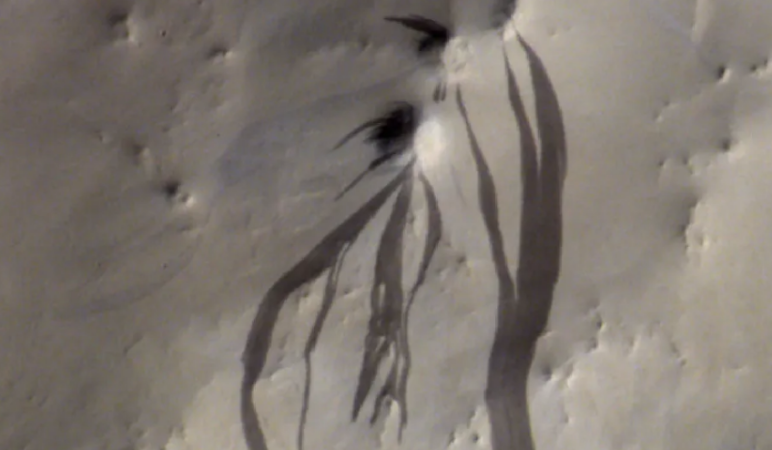First observed during NASA's Viking mission in the 1970s, long, dark streaks wind down the slopes of Mars and can extend for hundreds of feet across the Martian surface. Scientists have monitored some of these features for decades, while others — called "recurring slope lineae" — appear and fade within a single Martian season. Regardless of their lifespan, these markings are sharply visible against the dusty red terrain of the planet.
Given that present-day Mars is cold and arid, with surface temperatures rarely rising above the freezing point of water, the cause of these streaks has been widely debated. For years, they were considered among the strongest evidence that liquid water might still flow on Mars, hinting at the possibility of rare, habitable niches on the otherwise dry planet. The most widely accepted explanation proposed that salty water emerged from subsurface sources — such as buried ice deposits or underground aquifers — allowing brief flows across the chilly Martian surface. However, recent findings suggest a different explanation may better account for these features.
"A major goal in Martian research is to understand current surface processes — especially the potential presence of liquid water," said Adomas Valantinas, a postdoctoral researcher at Brown University, in a statement. “Our investigation examined these formations and found no signs of water. Instead, our model supports dry, non-liquid processes.”
To investigate, Valantinas and his team used machine learning to examine a massive dataset of more than 86,000 high-resolution satellite images depicting these streaks. Their analysis now points to wind and dust, rather than flowing water, as the more likely cause.
To reach this conclusion, the researchers created the first global map of slope streaks on Mars, cataloging over 500,000 individual features scattered across the planet. "Once we built this global map, we were able to compare it with existing datasets on temperature, wind speed, surface hydration, rockslide activity, and other environmental conditions," explained Valentin Bickel, a researcher at the University of Bern. “We could then analyze hundreds of thousands of instances to identify the factors associated with the formation of these features.”
Geostatistical analysis indicated that slope streaks and recurring slope lineae do not occur in areas where liquid water or frost would be expected. If water were involved, these slopes would likely face certain directions, undergo large temperature fluctuations, or be found in regions with higher humidity. Instead, the features are most often found in regions subject to strong winds and elevated levels of dust activity.
The research team concludes that these streaks are likely the result of dry dust layers sliding down steep inclines. The exact triggers of these dust slides can vary, but slope streaks are commonly found near recently formed impact craters — suggesting that seismic shockwaves from impacts may dislodge surface dust. Recurring slope lineae, on the other hand, tend to occur in locations frequently visited by dust devils or where rockfalls are common.
Understanding how features like slope streaks and recurring slope lineae are formed is essential for decoding Mars' environmental history and for guiding future exploration. By leveraging big data analysis from orbit, scientists can rule out certain theories without sending expensive missions to the surface. This helps prioritize exploration targets and enhances efforts to determine whether Mars ever supported life — while also safeguarding the planet's delicate environments as human and robotic missions probe further into space.
The research was published on May 19 in the journal Nature Communications.

